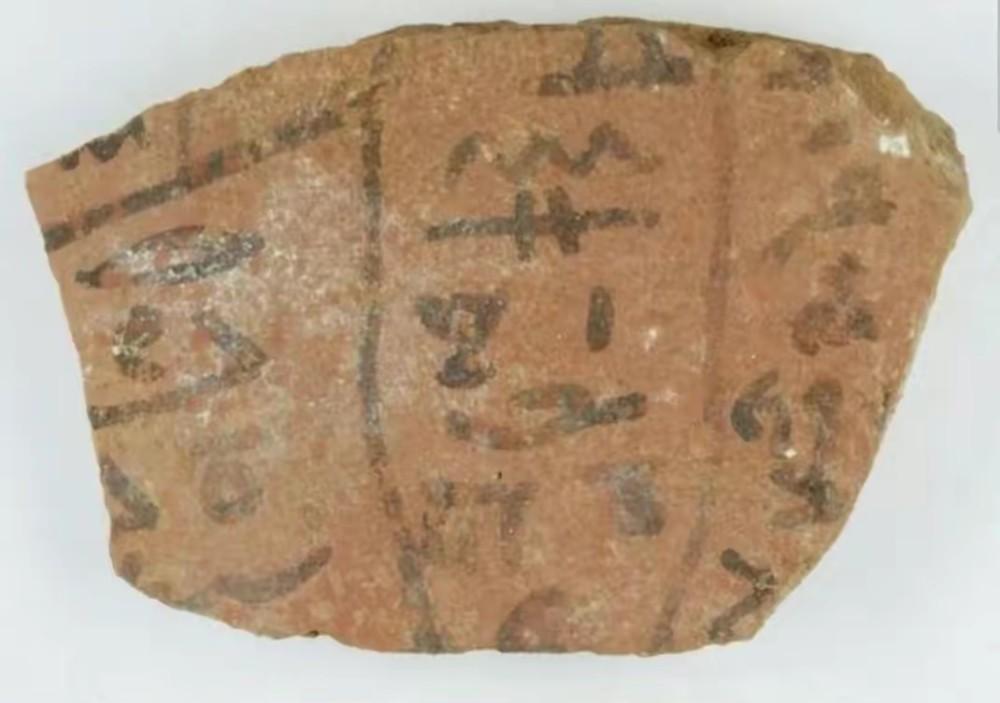Archaeologists have discovered the largest collection of ancient Egyptian "notepads" discovered since the early 20th century.
In the long-lost city of Atharibis in central Egypt, researchers have cataloged more than 18,000 pieces of pottery inscribed with inscriptions, some of which appear to have been written by students.
Fragments of inked pottery are called "ostraca". Much cheaper and more readily available than papyrus, ancient Egypt used broken jars and remnants of other utensils every day to make detailed shopping lists, record transactions, copy literary works and teach students how to write and draw.
In fact, the large number of ceramic plates found at the archaeological site of Arthur Libis appears to be the remains of an ancient school.
Christian Leitz, an Egyptologist at the University of Tübingen in Germany, said: "There are lists of months, numbers, arithmetic problems, grammar exercises and a 'bird alphabet' – each letter is assigned a bird whose name begins with that letter. ”

The sacred text in hieroglyphs may have been copied by students.
The more than 100 ostracas found at Athribis were subjected to repetitive writing exercises, with the same characters written on the front and back over and over again.
Even two thousand years ago, "naughty" children seemed to have been punished by the classic Bart Simpson.
Line writing from ancient Egypt.
Most of the notes found were written in Demotic, an administrative script used during the reign of Ptolemy XII (better known today as Cleopatra's father), who ruled from 81 BC to 59 BC and later from 55 BC to 51 BC.
During this period, the city of Asribis was the capital of the Egyptian state, located along the Nile. But while Demotic was clearly the more popular script of the era, it was still teaching children a simplified form of hieroglyphic script.
For example, the following snippet is a school text of a doctrinal alphabet, each letter accompanied by a corresponding bird.
School text with bird alphabet in Hieratic.
The various languages seen on Ostraka in Asribis, including hieroglyphs, Greek, Arabic and Coptic, all hint at the city's turbulent multicultural history. For example, the Coptic alphabet is a mixture of Greek and Egyptian, closely related to Christianity.
The script below is a Coptic receipt, probably written after Egypt fell into Roman hands in the 6th century.
With the rise of Christianity, writing about the gods of ancient Egypt began to fall out of favor. Below, for example, are illustrations of baboons and ibises, sacred animals of the ancient Egyptian god of wisdom, Tort.
Other signs of Roman influence can also be collected from pottery fragments. For example, after the fall of the Ptolemaic system in the first century AD, texts began to cite a series of Roman emperors, including Nero, Vespasian, Titus, Domitian, and even Hadrian, who reigned between 117 and 138 AD.
Only once before have such a large number of ceramic plates been found. In the early 1900s, archaeologists found a large number of fragments of writing in the ancient village of Dale Medina, a little further down the Nile.
However, most of these ancient texts are notes on medicine and medical practice. Ostraka of Asribis, on the other hand, can tell us more about the daily life of one of the most powerful civilizations in the ancient world.
Author: Xiao Le